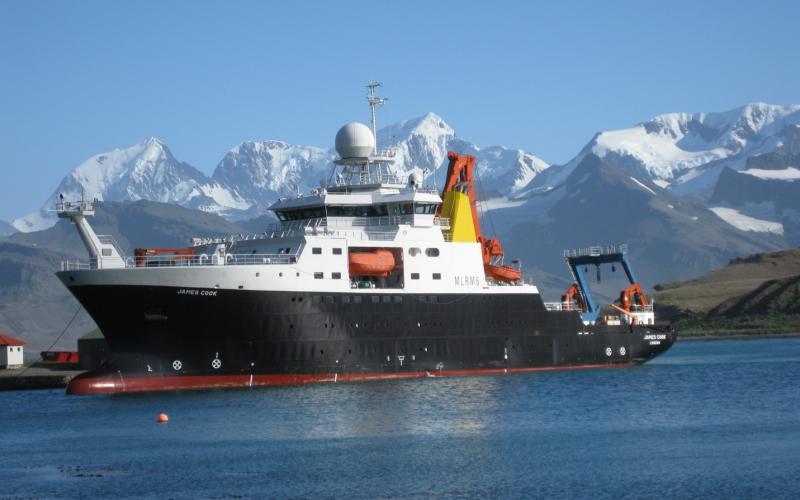Scientific advances reveal oceans – and the planet – in peril

Scientific advances reveal oceans – and the planet – in peril
Human activity is increasing carbon dioxide levels in the atmosphere, causing the ocean to absorb more carbon dioxide as well. New research shows that increasing oceanic carbon dioxide levels are also fluctuating with the seasons. Over time, these fluctuations are becoming more dramatic. As a result, marine animals will be pushed earlier than expected towards threatening conditions.
Landschützer, Peter, Nicolas Gruber, Dorothee C. E. Bakker, Irene Stemmler, and Katherina D. Six “Strengthening seasonal marine CO2 Variations due to increasing atmospheric CO2.” Nature Climate Change 8 (2018): 146-150. DOI: 10.1038/s41558-017-0057-x
The ocean is adaptive, fluid, and vast. Home to over two million species, it nurtures the most complex ecosystems on Earth. However, looming changes to ocean conditions threaten the survival of key species and entire ecosystems, posing threats to humans as well.
After centuries of burning fossil fuels, humans have released copious amounts of greenhouse gasses, including carbon dioxide, into the atmosphere. Carbon dioxide is prevalent throughout the world’s atmosphere, and the ocean has always absorbed some of it. When mixed with ocean water, carbon dioxide transforms into carbonic acid. The ocean absorbs more carbon dioxide each year as humans continue to pump it into the atmosphere, making the oceans more acidic which, in turn, dissolves marine animals’ shells. Recent evidence shows that these carbon dioxide levels swing seasonally, and the swings are getting worse. The acute episodes of higher carbon dioxide levels and acidity during seasonal peaks cause more stress on marine life, impacting ecosystems and fisheries that humans depend on for survival. Coupled with already increasing acidity, it is unclear how long marine life will be able to withstand these effects of climate change. New research suggests that the consequences are likely to be felt faster than we think.
Five researchers, collaborating from three top international research institutions, investigated seasonal variation in carbon dioxide levels in the global ocean. Their research, published in Nature Climate Change, shows an increase in the amount of variation in seasonal dissolved carbon dioxide in the ocean. These results, based on data collected over 34 years, indicate that the swing between low and high seasonal carbon dioxide levels is increasing over time, causing ever-higher peaks. The major factors in driving these fluctuations are oceanic variations in sea surface temperature, sensitivity to dissolved carbon dioxide, and changing ability to buffer carbon dioxide.
Research to date has described ocean acidification as one of the most dire consequences of climate change. Acidity prevents a wide range of ocean animals, like lobster and shellfish, from growing shells. Without shells, these animals cannot survive and become part of the food webs that many other species, including humans, rely on. Despite the importance of this issue, most researchers have focused on the average increase in carbon dioxide over long spans of time. What makes this study unique is its focus on the smaller, seasonal fluctuations.
Why are small fluctuations important? Imagine that every day the water in your shower becomes a tiny bit hotter than it was the day before. It might take a while for the water to be too hot for you to comfortably shower. Now imagine that during each shower, the water temperature bounces between hot and cold. The average temperature has only increased a tiny amount, but during the shower you feel temperatures much warmer and colder than the average. If the changes in temperature grow worse with every shower while the average continues to rise, it will not take very long before you can’t stand the hottest water temperatures.
This process describes the experience of marine animals in our acidifying oceans. Water is becoming more acidic over years, the acidity is bouncing higher and lower with the seasons, and the severity of the bounce is growing each year. Like a person in the hot shower, it won’t take long for the peaks in acidity to be too extreme for life to handle. While changes over years may seem like a long time, it is much too short for many species of animals to adapt.
Global warming and climate change have become household terms, yet we, as a society, have taken very little action again it. This research demonstrates that we must deepen our understanding of the challenges marine animals are facing. Without key species, from plankton, to lobster, to fish, marine webs will collapse. The future is in our hands. We must continue to push for more understanding of our planet, and advocate for what we can do to burn less fossil fuels, release less carbon dioxide, and help stabilize our oceans.




